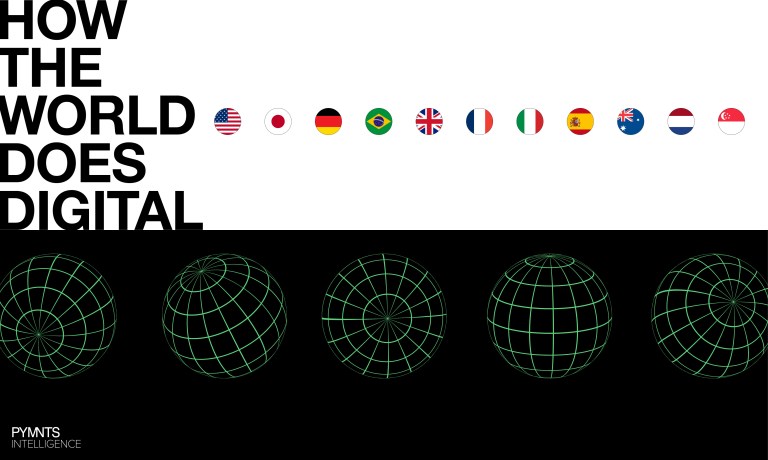
It’s time to take stock of global digital engagement. The pandemic has finally faded into memory and the flurry of consequential payments innovation has given way to a new round of products, features and applications. In short: Consumers are settling into reliable patterns for their digital lives. Analyzing it can finally yield predictable results.
With that in mind, PYMNTS Intelligence set to work on an ambitious research project over the last three years that informs how digital technology is not just reshaping consumer behavior; it’s redefining the consumer’s day-to-day habits.
The “How the World Does Digital” report offers a sweeping look at how consumers in 11 countries are engaging with digital activities, painting a vivid picture of a world in transition. With insights drawn from more than 60,000 consumers, this report reveals how digital infrastructure, generational divides, and economic disparities shape the global digital landscape. The “How the World Does Digital” report includes the U.S. and the U.K.; the five largest EU countries — France, Germany, Italy, the Netherlands and Spain; and Australia, Japan and Singapore in the Asia Pacific.
The nearly 60,000 consumers studied in 2023 are statistically representative of about 800 million people living in those countries. The report analyzes the digital behaviors of this population across 40 different activities involving how they work, live, pay, shop, eat, stay well, have fun, communicate, travel and bank.
2023 is the third year in which PYMNTS Intelligence has conducted this global study, and some 180,000 consumers have been studied, all told. Participants were asked how often they engaged in each activity — daily, weekly, monthly, or not at all. This approach provided detailed insights into the frequency and diversity of digital engagement.
We know that these 40 activities will expand as more physical world activities become part of the digital transformation of the global economy. What we present in this report is a snapshot of the connectedness of the global economy at this moment in time for the activities that are done digitally by people in these countries.
One key concept in the report is “activity days.” An activity day measures how many days a consumer engages in a digital activity within a month. For instance, if someone streams videos 15 days in a month and uses social media 10 days in the same month, they have a total of 25 activity days. This metric helps quantify overall digital engagement, allowing comparisons across different activities, generations and countries.
Key findings show that nearly 100% of consumers surveyed engage in at least one digital activity each month. However, the intensity of this engagement varies dramatically, underscoring a significant gap in digital adoption.
The report also found that generational differences are stark. Younger generations, particularly Gen Z and millennials, average exponentially more activity days per month and other cohorts, including baby boomers. Video streaming, messaging, mobile gaming and social media are the most popular digital pastimes globally, reflecting a digital-first approach to entertainment and communication.
Additional key findings include:
Activity concentration: A small number of activities dominate digital engagement.
Engagement across pillars: Consumers perform digital activities in the ‘Have Fun’ pillar about 54.5 times more than they do in the ‘Eat’ pillar.
Income influence: High-income earners are more likely to engage in a broader range of digital activities, particularly in the banking pillar.
Monthly activity: The average number of activity days was just 23.4% of the maximum 1,200 activity days possible, indicating room for growth in digital engagement.
The report also identifies the country with the highest overall digital engagement, as well as the country with the most highly engaged Gen Z consumers.
The “How the World Does Digital” report paints the picture of a world on the brink of the connected, digital transformation that has been on the agenda of business leaders and innovators for the last several years.
As the report states, the digital divide remains a critical challenge. Bridging this gap will require concerted efforts to improve access to digital tools and services, ensuring that all consumers can fully participate in the digital economy. The journey is long, but the destination promises a world where digital engagement is not just a privilege for the few, but a universal reality.